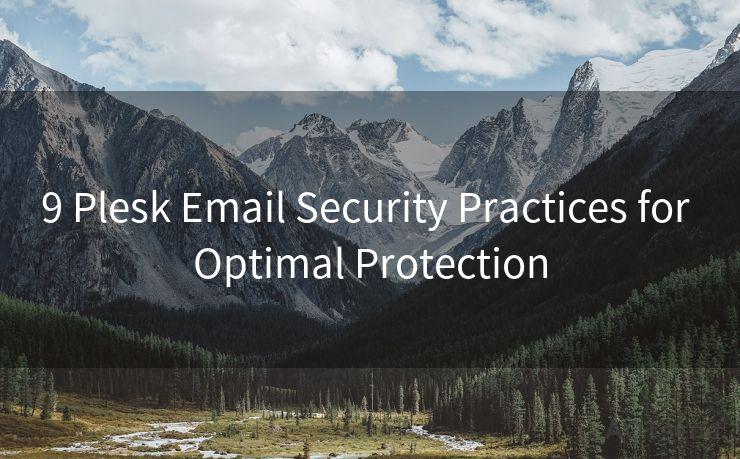9 Plesk Email Security Practices for Optimal Protection




Email security is paramount in today's digital landscape, where cyber threats are constantly evolving. If you're using Plesk to manage your web hosting and email services, it's crucial to follow best practices to ensure optimal protection. Here are nine key Plesk email security practices that can help you safeguard your communication and data.
1. Enable Two-Factor Authentication
Two-factor authentication (2FA) adds an extra layer of security to your Plesk account. By requiring a second form of verification, such as a code sent to your mobile device, 2FA makes it much harder for unauthorized individuals to access your account, even if they have your password.
2. Use Strong Passwords
Creating a strong and unique password for your Plesk email account is essential. Avoid using easily guessable or common passwords. Instead, opt for a complex combination of letters, numbers, and special characters. Consider using a password manager to generate and store secure passwords.
3. Keep Plesk and All Extensions Up to Date
Regularly updating Plesk and all its extensions ensures that you have the latest security patches and bug fixes. Outdated software can expose vulnerabilities that hackers can exploit.
4. Configure Firewall and Security Settings
Properly configuring your firewall and security settings in Plesk can help prevent unauthorized access. Restrict access to Plesk and email services only from trusted IP addresses, and enable additional security features like brute force protection.

5. Implement Email Filtering and Antivirus Scanning
Email filtering can help block spam and phishing emails before they reach your inbox. Additionally, enabling antivirus scanning for incoming and outgoing emails can prevent the spread of malicious software.
6. Regularly Backup Your Data
Backing up your email data regularly is crucial in case of any unexpected events like hardware failures or security breaches. Plesk offers backup and restore functionality that you should utilize to protect your data.
7. Monitor and Review Email Logs
Regularly monitoring and reviewing email logs can help identify any suspicious activity or potential security breaches. Plesk provides tools to help you analyze logs and detect any unusual patterns.
🔔🔔🔔
【AOTsend Email API】:AOTsend is a Managed Email Service for sending transactional emails. Support Email Types: reminders, authentication, confirmations, notifications, verification codes, invoices, password resets, account activations, billing statements, two-factor authentication (2FA), and one-time passwords (OTP) emails, etc. $0.28 per 1000 Emails. 99% Delivery, 98% Inbox Rate.
You might be interested in:
Why did we start the AOTsend project, Brand Story?
What is a Managed Email API, How it Works?
Best 25+ Email Marketing Platforms (Authority,Keywords&Traffic Comparison)
Best 24+ Email Marketing Service (Price, Pros&Cons Comparison)
Email APIs vs SMTP: How they Works, Any Difference?
8. Use Encrypted Email Communication
Ensuring that your email communication is encrypted is vital for protecting sensitive information. Consider using secure protocols like SSL/TLS for email transmission and storing sensitive data.
9. Educate Users on Email Security Best Practices
Finally, it's essential to educate your users on email security best practices. This includes recognizing and avoiding phishing emails, not opening suspicious attachments, and using strong passwords.
By following these nine Plesk email security practices, you can significantly enhance the protection of your email communication and data. Remember, email security is not just about technological measures but also about user education and awareness. Stay vigilant, keep your systems updated, and regularly review your security settings to ensure optimal protection.




Scan the QR code to access on your mobile device.
Copyright notice: This article is published by AotSend. Reproduction requires attribution.
Article Link:https://www.mailwot.com/p707.html



